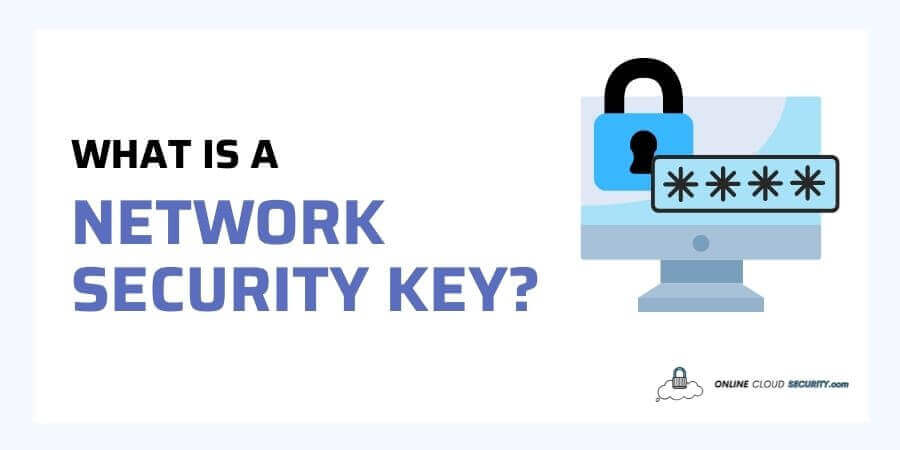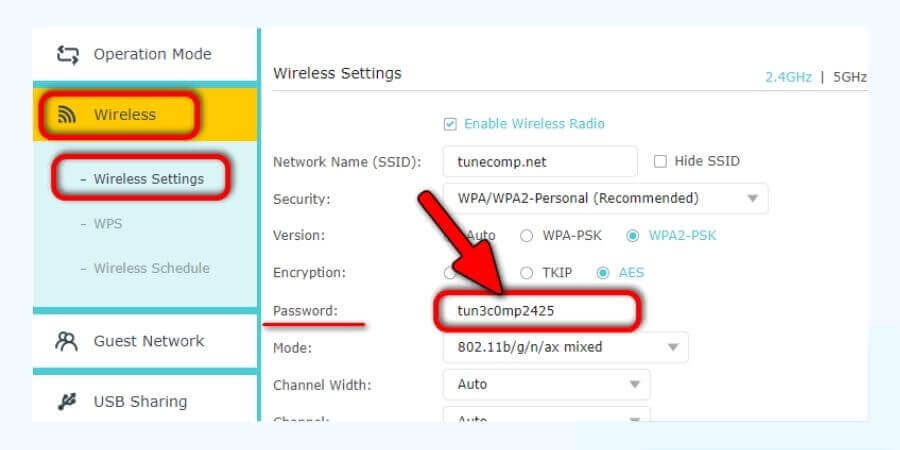
Dave Miller – Tech Enthusiast & Security Expert – April 9th, 2022

When getting started with your Wi-Fi connection, you might be puzzled about what is a network security key. Our world has grown increasingly linked due to the internet’s deployment and widespread use. Although the internet has made the globe a smaller place, online users now have more resources and digital availability of services than ever before. Last year, ransomware intrusions increased by a startling 105 % worldwide. However, a security key is one aspect that helps you assure security surrounding your devices when you use these gadgets to access the internet.
Continue reading to learn more about how this network security key is essential, where you can get it and how to safeguard your network better.

We employ various network security measures to protect our total network system against security breaches and virus attacks. And network security is another one of those measures that have evolved through time; there are now a few multiple kinds that function in various ways. To address your question, what is a network security key? We’ll go through the definition of a network security key. In simple words, It is, in essence, the passcode required to connect to a local network.
It creates a secure connection between the user seeking access and the network or wireless device, allowing users to create a safe link and prevent illegal access. It will prevent cyber thieves from gaining unauthorized access to a network and related devices.
Note: Cyberattacks are unavoidable, and even with a network security key, breaches can still occur; nevertheless, these keys lower the likelihood of criminal acts. The proper key would create a tough time compromising or attacking the information of a network user.
Now You know what is a network security key. Let us get some insights on its types. Although various kinds of network security keys provide different levels of protection, their essential purpose remains the same. There are two typical types of network security keys, each with its level of protection with further upgrades.
The oldest and most widely used Wi-Fi security protocol is Wired Equivalent Privacy. WEP was the first effort at wireless security, and it got introduced in 1997. Depending on the WEP version, a key must be 10, 26, or 58 characters long, and the data packet is encrypted using a 40-bit key. An RC4 key gets created by combining this key with a 24-bit IV. A 64-bit WEP key comprises 40 bits and 24 bits of IV.
WEP’s primary purpose was to avoid Man-in-the-Middle cyberattacks, which got accomplished for a period. Despite protocol upgrades and enhanced key size, the WEP standard has reached 64 to 128-bit, and WEP keys fell out of favor. People grasp how easy hackers can break, leaving your network vulnerable to hackers.
Because of their compatibility with legacy systems, WEPs are still in use, and many Wi-Fi devices support them as a network option.
Due to the issues stated above, Wi-Fi Protected Access keys are considered an improvement over WEP. The password for a WPA key can get obtained from the network’s owner. If you have a Wi-Fi router on your premises, the WPA key is the passcode written on the router’s rear.
The primary purpose of the WPA network security key is to encrypt the data and to confirm that the network security key has still not been tampered with. It operates by using a per-packet key and a transient key integrity protocol. Each packet comes, produces a new 128-bit key, and allocates it to the data packet.
It eliminates the threats that made WEP susceptible and limits unauthorized access. All wireless network adapters are compatible with the WPA network security key. But there are some with which it may not be compatible with older entry points or routers.
WPA had problems when it first came out, and these concerns got addressed by the WPA2 standard, which gets adopted in 2006. WPA2 builds on its predecessor in various ways. It superseded WPA and incorporated all of the requirements of IEEE 802.11i, including support for the CCM protocol, which is an AES-based encryption method.
A unique encryption key gets sent to each wireless client connecting to a WPA2 network. It also employs a Pre-Shared Key with 64 hexadecimal digits. This strategy usually gets used; However, keep in mind that WPA2 may necessitate higher-processing-power hardware. Therefore, WPA2 is often the preferred version for enterprises that want more stringent security measures. You should always pick WPA2 over obsolete and insecure technologies for your Wi-Fi connectivity.
Some WPA2 vulnerabilities have recently been discovered virtually exclusively found in extensive business-level networks and should not be of concern to home users on the network.
Wi-Fi Protected Access 3 is the third edition of the Wi-Fi Alliance’s security certification scheme. Since 2018, the very first devices that enable WPA3 have become available. It enhances security over the commonly used WPA2 standard while maintaining backward compatibility; however, it took a few years to be entirely supported.
It’s more secure than the existing standard, WPA2, and provides better security and protection for businesses and end-users. WPA3 keys take authentication procedures further, providing greater security and safeguards for businesses and home consumers.
WPA3-Enterprise mode employs a cryptographic strength of 192 bits, whereas the WPA3-Personal method demands AES-128 as the least encryption algorithm in CCM mode.
Note: WPA, WPA2, and WPA3 network keys are all advances over their previous versions, but they don’t wholly guarantee network security. Users should always exercise caution when exchanging critical information on any linked network.
Locating network security keys may be done in several ways. Default WEP keys get frequently supplied with the router on a sheet of paper. WPA/WPA2 default keys get pasted on your router’s back, usually on a sticker.
Another quick and straightforward approach to locating your network security key is to go straight to your router. You can discover how to view your router’s dashboard by visiting the manufacturer’s website. If it does not appear on the main menu once you log in, navigate through the menu to check for a connection or WIFI. There’s a good chance you’ll find the network security key here.
If you are looking for a detailed step by step guide to finding out your network key, visit the following links
Now you completely understand what is a network security key, so here are some of the benefits you will usually get through a networks security key
An attack occurs when a person connects to an open or poorly protected wireless network nearby. When hacking a network, hackers and cybercriminals might have a variety of motives. So, the main advantage of network security keys is that they can prevent thieves from gaining access to your network. Ensure that all of the access points you connect employ WPA2 encryption. WPA2 is the most used security protocol since Wi-Fi devices don’t always recognize WPA3, and many only support WPA2.
The usage of keys, protocols, and encryption standards on a secure network helps to keep data safe and secure. Cybercriminals can acquire access to information and utilize it for various purposes if there isn’t a network security key in place.
Here are some general tips to keep your network safe apart from just relying on a network security key
Learn to protect your data from cyberattacks by securing your home’s WIFI. When it comes to cyber assaults, network security keys are frequently the first line of protection. Understanding how they function can assist individuals and organizations in safeguarding their sensitive data.
By logging into your router, you can always see which security technique is active. Even though network security keys constitute the initial protection line, they are not the ultimate answer for network security. Other security precautions should get implemented to keep yourself secure online. Even if your data has got compromised, knowing more about security practices is the only way to keep yourself safe. Consider it a learning opportunity and work on your protection for the future.
**Onlinecloudsecurity.com is a participant in the Amazon Services LLC Associates Program, an affiliate advertising program designed to provide a way for websites to earn advertising revenues by advertising and linking to Amazon.com and affiliated sites. As an Amazon Associate we earn affiliate commissions from qualifying purchases.**

Dave Miller is an IT Consultant for Online Cloud Security and has over 7 years of experience in the Information Technology space. He also specializes in repairing laptops & computers. In his spare time, he loves to talk about new technologies and hosts monthly IT and Cyber Security meetings in the Houston area.
Click any button down below to share this article on the following channels:

Online Cloud Security is here to recommend you the most secure devices, from laptops to smartphones, we only want to provide you with products that we have tested and used ourselves for online security. Every product that we recommend is heavily inspected and tested for security against hackers, viruses, malware, and any other intruders that may want to steal your information.

Online Cloud Security is here to recommend you the most secure devices, from laptops to smartphones, we only want to provide you with products that we have tested and used ourselves for online security. Every product that we recommend is heavily inspected and tested for security against hackers, viruses, malware, and any other intruders that may want to steal your information.
Your Trusted Source for Online Security